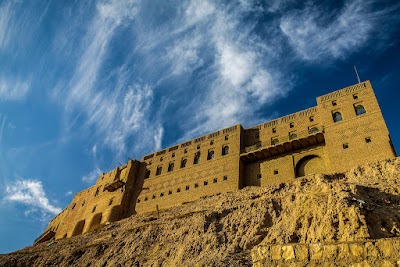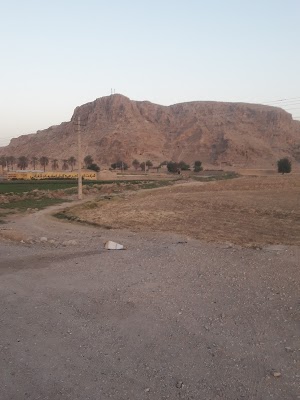Erbil Citadel (قلعه اربیل)
Overview
Erbil Citadel: A Journey Through Time
Nestled in the heart of Erbil, the capital of the Kurdistan Region in Iraq, the Erbil Citadel (قلعه اربیل) stands as a magnificent testament to the region's rich history and cultural heritage. This ancient fortress, believed to be one of the oldest continuously inhabited places in the world, towers over the modern city below, offering a stunning panoramic view that captivates every visitor. The citadel's towering walls and narrow winding streets beckon travelers to explore its depths, revealing layers of history reflecting the various civilizations that have called this area home.
As you approach the citadel, you can’t help but notice its imposing structure, which has been a significant landmark for over 6,000 years. The site has witnessed the rise and fall of empires including the Assyrians, Babylonians, and Ottomans. Today, it serves as a UNESCO World Heritage Site, recognized for its unique architectural features and historical significance. The citadel is built on a 32-meter high mound and encompasses around 10 hectares, creating a small city of its own where ancient and modern worlds coexist.
Exploring the Citadel: A Walk Through History
Once inside the citadel, visitors will find themselves walking through a labyrinth of narrow streets lined with traditional stone buildings. Many of these structures are adorned with intricate carvings and feature distinctive Kurdish architecture. As you stroll along these paths, make sure to visit the small museums and art galleries housed within the citadel, showcasing local handicrafts, historical artifacts, and contemporary art that reflect the vibrant culture of the Kurdish people.
One of the highlights of your visit will be the Citadel Museum, which offers an insightful glimpse into the historical narrative of Erbil and its surrounding region. Here, you can learn about the daily lives of the inhabitants throughout different periods, as well as the citadel's role in various historical events. Additionally, be sure to explore the Qaysari Bazaar, located just outside the citadel’s walls, where you can shop for traditional Kurdish textiles, spices, and handicrafts, making for perfect souvenirs to remember your trip.
Cultural Significance and Local Life
The Erbil Citadel is not just a relic of the past but is also a thriving hub of cultural activity. Locals frequently gather within its walls for festivals, art exhibitions, and community events, allowing visitors to engage with the vibrant Kurdish culture in a meaningful way. You may even stumble upon traditional music performances or dance displays that invite you to join in the celebration.
Moreover, the citadel's significance extends beyond its historical and architectural wonders. It serves as a symbol of resilience and unity for the Kurdish people, reflecting their enduring spirit despite the challenges they have faced throughout history. Visiting the Erbil Citadel offers travelers not just a look into the past, but an opportunity to understand the contemporary cultural landscape of Kurdistan.
Practical Tips for Travelers
For foreign travelers planning to visit the Erbil Citadel, it's important to be aware of local customs and traditions. Dress modestly and be respectful of the local culture, especially when visiting places of significance. English is commonly spoken in tourist areas, but learning a few basic phrases in Kurdish can enhance your experience and help you connect with the locals.
The best time to visit the citadel is during the spring (March to May) or fall (September to November) when the weather is pleasantly mild. Be sure to bring your camera, as the stunning views from the citadel, especially during sunset, are truly breathtaking. Whether you are a history enthusiast, an architecture lover, or simply a curious traveler, the Erbil Citadel promises a memorable and enriching experience that will stay with you long after your visit.





